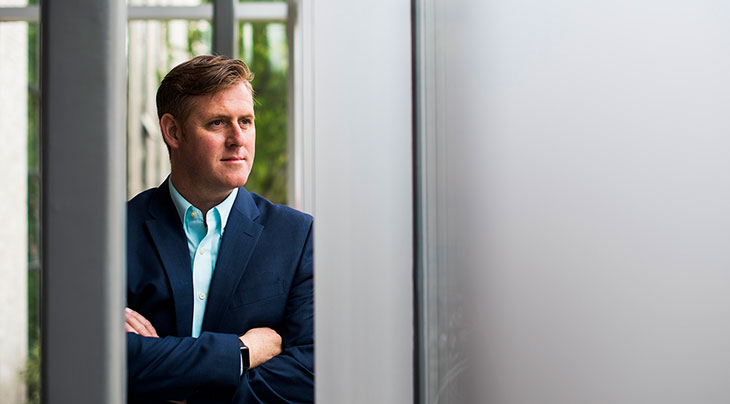Cloud-based design programs and 3D printers are changing the innovation game for businesses. According to Tucker Marion, professor of entrepreneurship and innovation at the D'Amore-McKim School of Business, and Babson College professor Sebastian Fixson, the “perfect storm” has been cultivated by better collaboration tools such as Slack and cloud-based tools like 3D printers.
“These two forces of digitization and collaboration that have come together over past 10 years have completely changed the way companies can approach innovation,” said Tucker Marion. “We came up with a framework for how companies can use these different approaches to the innovation process at different times, and how there are challenges and opportunities for companies as they strategically navigate how they can innovate.”
Marion and Fixson wrote “The Innovation Navigator” to help companies expand their ability to innovate creatively and produce new ideas. The authors identified four strategies, or modes of innovation, that companies could employ to transform their organizations.
- The “specialist mode,” in which companies that specialize in specific products use new technologies to improve those products and advance their competitive advantages in the market.
- The “venture mode,” in which companies expand the entrepreneurial culture within their organizations by encouraging their employees to try out these new technologies.
- The “community mode,” in which companies invite their customers and others outside their organizations to help generate new ideas and design products.
- The “network mode,” in which companies increase the number of their collaborators to include outside organizations, universities, and governments with which they've developed close relationships.
In order to write the book, Marion and Fixson studied numerous companies and how they attempted to use the strategies outlined above to develop new products. “The Innovation Navigator” also outlines challenges and opportunities businesses may face in each mode.
“We are [experiencing] very dynamic changes due to technology, competition, and disruption for many traditional industries,” Marion said. “Companies need to be faster and more agile. They need to respond more quickly to these changes by adding new and diverse actors to the innovation process that can help. They also need to get the most out of their employees.”

